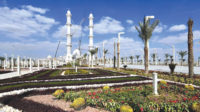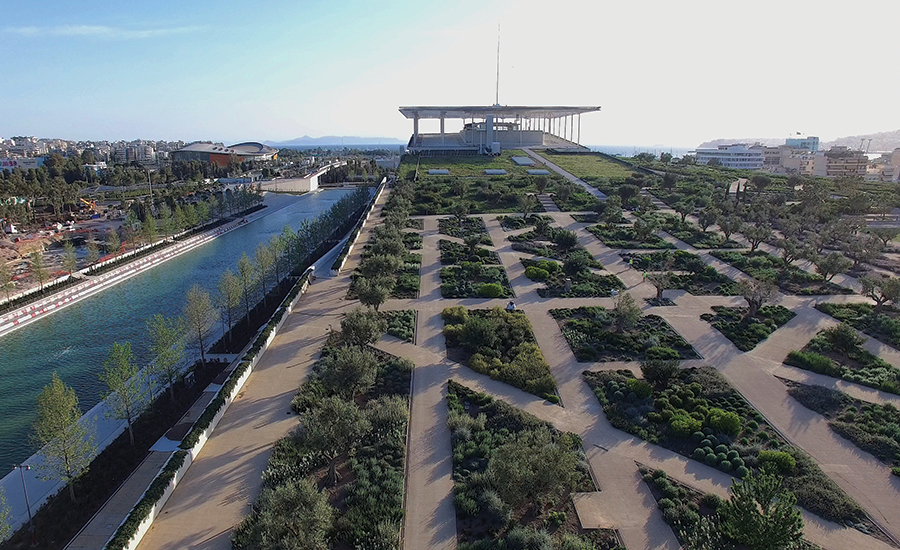Best Cultural - Stavros Niarchos Foundation Cultural Center

The Stavros Niarchos Foundation Cultural Center includes a 183,000-sq-ft national park that has 1,459 trees and 280,000 shrubs.
PHOTO COURTESY OF JOINT VENTURE SALINI IMPREGILO S.P.A. - TERNA S.A.

PHOTO COURTESY OF JOINT VENTURE SALINI IMPREGILO S.P.A. - TERNA S.A.

PHOTO COURTESY OF JOINT VENTURE SALINI IMPREGILO S.P.A. - TERNA S.A.



Stavros Niarchos Foundation Cultural Center
Athens, Greece
Best Project
Owner SNFCC A.E.
Contractor Joint Venture Salini Impregilo S.p.A.-TERNA S.A.
Lead Designer Renzo Piano Building Workshop; BETAPLAN Architects & Planners
Structural Engineer Expedition Engineering Ltd.; OMETE S.A.; G. & G. Penelis Consulting Engineers S.A.
Civil Engineer Expedition Engineering Ltd.; Omete S.A.
MEP Engineer Arup; LDK Consultants
Landscape Design Deborah Nevins and Associates; H. Pangalou & Associates
When construction on the Stavros Niarchos Foundation Cultural Center began four years ago in Athens, the local market was nonexistent for basic materials such as ready-mix concrete. Greek suppliers had no stock, and foreign purveyors insisted on advanced payment before sending product to the epicenter of an economic crisis. “In this environment, we had about 1,500 workers for the full period of the construction,” recalls project executive Gianni Botteon of Rome-based contractor Salini Impregilo S.p.A. “We built something for the people of Athens. It was a miracle.”
Conceived in 2006 before the crisis and funded by private philanthropy, the ostentatious $831-million national library and opera house is nothing less than audacious in the face of austerity. Construction, which concluded in May, directly and indirectly contributed more than $1 billion to Greece’s gross domestic product and generated more than $64 million in tax revenue. Slated to be gifted to the Greek government as early as this fall, the complex is estimated to create 2,300 full-time jobs in and around the center’s neighborhood as well as $157 million annually to Greece’s GDP.
The project’s 56-acre footprint on Filiro Bay reclaims a former parking lot, built for the 2004 Olympics. It includes a nearly 183,000-sq-ft national park that reconnects the city to the sea. Designed to LEED Platinum, the complex features 1,459 trees, 280,000 shrubs and nearly 108,000 sq ft of photovoltaic cells, generating 1.8 megawatts.
The solar panels are installed on top of a seemingly paper-thin canopy, supported by a series of strikingly narrow columns and cables. World-renowned architect Renzo Piano designed the canopy to be the largest ferro-cement span in the world. The 328-ft by 328-ft canopy is 35 millimeters thick and weighs 43,000 tons.
Comprising 720 panels—each 23-ft by 11.5-ft section has a different shape and curvature—the canopy resembles a metallic monolithic structure. The panels were precast in an on-site factory, housed in a 43,055-sq-ft temporary building. Then, the panels were placed on 30 support columns and connected with wire mesh, which was filled in with ferro-cement. Each column was topped with springs to lift the canopy into place. Resting approximately 39 ft above the building’s roof, the canopy sits 1 mm within its intended design specifications. “From a technical point of view, this was really something,” Botteon says.
The canopy took one year to design and one year to construct, including six months to fabricate the panels and six months to install. At one point, the project team had a “crisis moment” when the client reconsidered the canopy altogether, Botteon says. “Thank God the architect told the client, ‘Look, if you don’t build the canopy, this will not be my project anymore,’ ” he adds.
The project’s national park opened in August. The building’s library could open in early 2017 but not before the previous downown Athens national library’s two million books are disinfected, transported and shelved. The opera house will conduct its first concert in February.
While the Stavros Niarchos Foundation committed to paying approximately $5 million annually to maintain the complex for three or four years, it’s unclear if the Greek government can assume and sustain that responsibility in the long run. “Yes, this was a risk because this is a building that needs a lot of maintenance,” says Botteon, noting that the park alone needs up to 40 full-time gardeners. But he believes the complex will be more than just a beacon of hope for the current Greek population, which can only dream of a better future. Botteon has faith that the building will stand “as a landmark for modern Greece” for generations to come.





